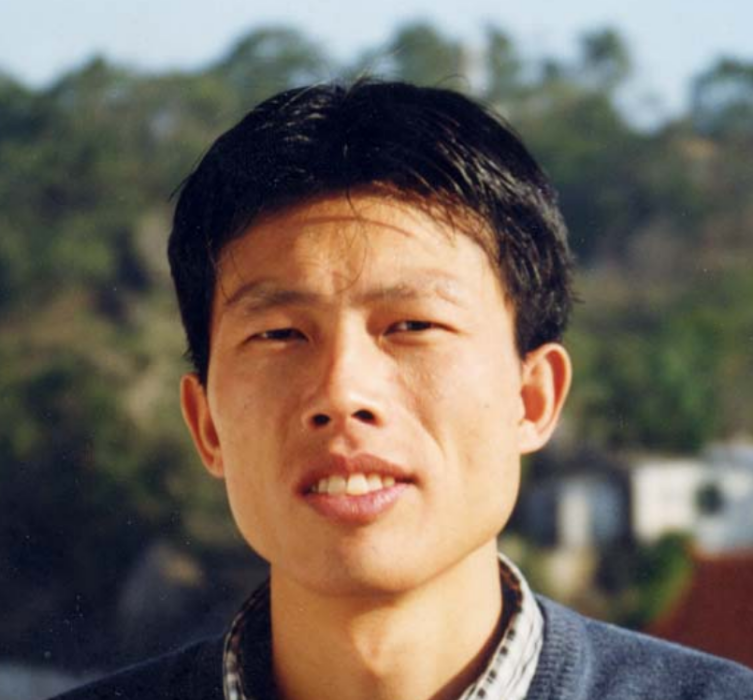歐陽高亮,男,博士,廈門大學生命科學學院教授、博士生導師。
基本介紹
- 中文名:歐陽高亮
- 畢業院校:廈門大學生命科學學院
- 學位/學歷:博士
- 職業:教師
- 專業方向:腫瘤轉移
- 任職院校:廈門大學
個人經歷,研究領域,學術成果,
個人經歷
1993, BSc., Nanchang University
2001, Ph.D., Xiamen University
1993-1996: Assistant, Jiangxi Medical College
2001-2003: Assistant Professor, Xiamen University
2006-2008: Research Scholar, Department of Molecular and Cell Biology, University of California, Berkeley, USA
2003-2010: Associate Professor, School of Life Sciences, Xiamen University
2010-Present: Professor, School of Life Sciences, Xiamen University
1993年畢業於南昌大學生物學系,獲學士學位
2001年畢業於廈門大學生命科學學院,獲博士學位
1993-1996江西醫學院基礎醫學部助教
2001-2003廈門大學生命科學學院講師
2003-2010廈門大學生命科學學院副教授
2006.2-2008.1 在美國加州大學伯克利分校研究學者
2010.8-至今廈門大學生命科學學院教授 博士生導師
現為廈門大學生命科學學院副院長,中國細胞生物學學會理事,中國生理學會基質生物學專業委員會委員
研究領域
Tumor metastasis involves dissemination of cancer cells to distant organ sites and their subsequent adaptation to and remodeling foreign tissue microenvironments. We have discovered that matricellular proteins (Periostin, OPN, etc) contribute to cell survival, EMT, stemness maintenance, angiogenesis and pre-metastatic niche formation during tumor metastasis. Our current work demonstrated that matricellular proteins play a critical role in remodeling tissue microenvironments during inflammation and tumor progression. We will continue to investigate the functions of matricellular proteins in stem cell niches and in inflammatory and metastatic microenvironments.
腫瘤轉移是一複雜的多步驟過程,涉及腫瘤細胞侵襲轉移至靶器官、適應並重塑靶器官的組織微環境。本課題組長期致力於研究基質-細胞蛋白(簡稱基質蛋白,如Periostin、OPN等)在腫瘤轉移中的功能,發現這些蛋白可通過促進細胞生存、上皮細胞間質轉化、幹細胞乾性維持、血管發生和轉移前微環境形成來促進腫瘤轉移。我們目前的研究表明基質蛋白在炎症發生和腫瘤轉移過程中可參與重塑組織微環境。本課題組將繼續深入研究基質蛋白在調控幹細胞微環境、炎症微環境和腫瘤轉移微環境中的功能。
學術成果
代表性論著(Selected Publications)
1.Wang Z, Xiong S,Mao Y, Chen M, Ma X, Zhou X, Ma Z, Liu F, Huang Z, Luo Q,Ouyang G*. Periostin promotesimmunosuppressive pre-metastatic niche formation to facilitate breasttumor metastasis.J Pathol, 2016.
2.Fan C, Lin Y, MaoY, Huang Z, Liu AY, Ma H, Yu D, Maitikabili A, Xiao H, Zhang C, Liu F, Luo
Q,Ouyang G*. MicroRNA-543suppresses colorectal cancer growth and metastasis by targeting KRAS, MTA1 and HMGA2.Oncotarget, 2016.
3.Li Y, Wu S, Xiong S,Ouyang G*.Deficiency of periostin protects mice against methionine-choline-deficient diet-induced nonalcoholic steatohepatitis.J Hepatol, 2015.
4.Huang Y, Liu W, Xiao H, Maitikabili A, Lin Q, Wu T, Huang Z, Liu F,Luo Q,Ouyang G*. Matricellular
protein periostin contributes to hepatic inflammation and fibrosis.AmJ Pathol, 2015.
5.LinY, LiuAY, FanC, ZhengH, LiY, ZhangC, WuS, YuD, HuangZ, LiuF, LuoQYangCJ,OuyangG*.MicroRNA-33b inhibits breast cancer metastasis by targeting HMGA2, SALL4and Twist1.Sci Rep, 2015.
6.Huang Z, Wu T, Liu AY*, Ouyang G*. Differentiation andtransdifferentiation potentials of cancer stem cells.Oncotarget, 2015.
7.Qiu H, Fang X, LuoQ*,Ouyang G*. Cancer stemcells: a potential target for cancer therapy.Cell Mol Life Sci,2015.
8.Wu T, Luo Q*,Ouyang G*. Periostin: a potentchemotactic factor for recruiting tumor-associated macrophage.ProteinCell, 2015.
9.Zhou L, Liu F,Wang X*,Ouyang G*. The rolesof microRNAs in the regulation of tumor metastasis.Cell Biosci, 2015.
10.Wu T, Wu S,Ouyang G*. Periostin: a new extracellular regulator of obesity-inducedhepatosteatosis.Cell Metab, 2014. (Preview)
11.Liu AY, Zheng H,Ouyang G*. Periostin, a multifunctional matricellular protein in inflammatory andtumor microenvironments.Matrix Biol, 2014.
12.Conway SJ, Izuhara K, Kudo Y, Litvin J, Markwald R,Ouyang G, Arron JR, Holweg CT, Kudo A*. The role of periostin in tissue remodeling across health and disease.Cell Mol Life Sci, 2014. (Allauthors contributed equally).
13.Wu T,Ouyang G*.Matricellular proteins: multifaceted extracellular regulators in tumordormancy.Protein Cell, , 2014.
14.Liu AY, Cai Y, Mao Y, Lin Y, Zheng H, Wu T, Huang Y, Fang X, Lin S,Feng Q, Huang Z, Yang T, Luo Q*,OuyangG*. Twist2 promotes self-renewal of liver cancer stem-like cells byregulating CD24.Carcinogenesis, 2014.
15.Li X, Zhang W, Liu L, Zhu Z,Ouyang G, An Y, Zhao C, Yang CJ*. In vitro selection of DNA aptamers for metastatic breastcancer cell recognition and tissue imaging.Anal Chem, 2014.
16.Wang X, Liu J, Wang Z, Huang Y, Liu W, Zhu X, Cai Y, Fang X, Lin S,Yuan L,Ouyang G*. Periostincontributes to the acquisition of multipotent stem cell-like properties in human mammary epithelial cells and breast cancer cells.PLoSOne, 2013.
17.Liu AY,Ouyang G*. Tumorangiogenesis: glioblastoma stem cells as a new source of pericytes.CurrBiol, 2013. (Dispatch)
18.Wang Z,OuyangG*. Periostin: a bridge between cancer stem cells and their metastaticniche.Cell Stem Cell, 2012. (Preview)
19.Fang X, Cai Y, Liu J, Wang Z, Wu Q, Zhang Z, YangCJ, Yuan L,Ouyang G*. Twist2contributes to breast cancer progression by promoting anepithelial-mesenchymal transition and cancer stem-like cell self-renewal.Oncogene,30: 2011.
20.Ruan K, Bao S,OuyangG*. The multifaceted role of periostin in tumorigenesis.Cell Mol Life Sci, 2009.
21.Song G,Ouyang G, Mao Y, Ming Y, Bao S, Hu T. Osteopontinpromotes gastric cancer metastasis by augmenting cell survival and invasion through Akt-mediated HIF-1aup-regulation and MMP9 activation.J Cell Mol Med,, 2009. (These authors contributedequally to this work).
22.Ouyang G*, Liu M, Ruan K, Song G, Mao Y, Bao S. Upregulatedexpression of periostin by hypoxia in non-small-cell lung cancer cells promotes cell survival via the Akt/PKB pathway.Cancer Lett,2009.
23.Song G, Cai QF, Mao YB, Ming YL, Bao SD,Ouyang GL*. Osteopontin promotes ovarian cancer progression and cell survival and increases HIF-1αexpression through PI3-K/Akt pathway.Cancer Sci, , 2008.
24.Bao S,OuyangG, Bai X, Huang Z, Ma C, Liu M, Shao R, Anderson RM, Rich JN, Wang XF*. Periostin potently promotes metastatic growth of colon cancer byaugmenting cell survival via the Akt/PKB pathway.Cancer Cell, 2004.

